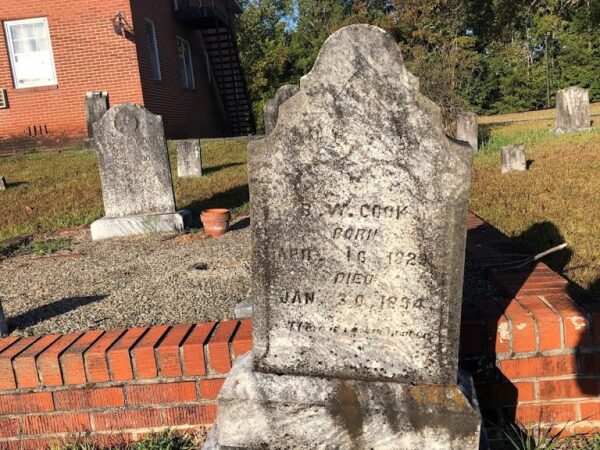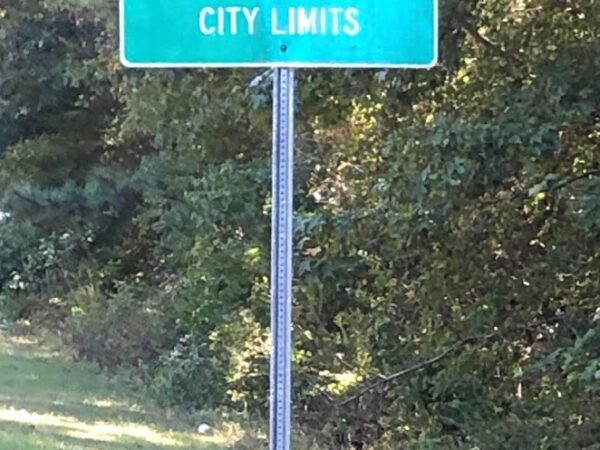Each and every individual in my family tree holds a special place in my heart. The tragic, the strong, the loving, the determined and the stubborn–each person belongs and as I learn about their lives and what they encountered and endured, I feel greater determination to similarly face my trials with courage and the same spirit of perseverance.
Burton W. Cook has always been a favorite of mine. Although I am actually related to his wife and children and not Burton himself, I nonetheless feel a strong draw to Burton and it’s in researching him that I have learned something about his wife and children. Unlike some of the characters in stories previously shared in this blog, Burton didn’t dip in and out of the newspapers and court rooms, but he just seemed to be in the right place at the right time, places where ancestors are supposed to be, but mine so seldom are. I find him in deeds, tax records, Agricultural Censuses, Federal Censuses, Civil War records including enlistment and Southern Claims Commission and he even had a will AND there is record of his burial! Who knew such a person existed? So many of my ancestors are so elusive.
Burton W. Cook was born about 1831, and while the records show conflicting data, I believe he was likely born in North Carolina. I would love to know who his parents were, but my research, in addition to the information that I’ve received from some of his descendants has failed to produce any parents. Interestingly enough, the first document that I have for him is his marriage license to Mary Ganus on 7 April 1850 in DeKalb County, Georgia. Mary was my second great-grandaunt and the oldest child of James (Gur)Ganus and Elizabeth McCluskey, my second great grandparents. I am unsure exactly where Burton was and what he did prior to his marriage.
On the 1850 U.S. Federal Census, just a short six months after their marriage, Burton and wife, Mary, are shown residing in the household of Shadrack Ellis, 89 years old, and Mary Ellis who was 35 years old, living in the Stones District of DeKalb County, Georgia . I have wondered why they were living with Shadrack and what the connection was? While I can think of a variety of possibilities for the relationship and have explored options, I have not yet been able to prove any of them.
The first twelve years of Burton and Mary’s life together appeared to be fairly typical of the time. Burton farmed and Mary cared for the house and children. I did note that their first known child was born five years after their marriage, which is a little unusual for their time period..
Soon came the event that brought drastic change to life in the United States: the Civil War. Joining the ranks with neighbors and friends, Burton volunteered in Fayetteville, Georgia on May 1, 1862 and was mustered into Captain Samuel W. Marshborn’s Company, Co C 53rd Regiment, the Georgia Fayette Planters. Burton indicated that his place of residence was Atlanta. I was thrilled to find that Burton’s record included a physical description. Burton had a florid complexion, dark hair, grey eyes and was six foot tall.
At the time of his enlistment, Burton and Mary had three children. Isaiah M. was 7 years old, Elizabeth was 4 years old and Burton Calloway, their youngest at the time, was about three months old. I can only imagine Mary’s mixed feelings as Burton went off to fight. While she likely felt a loyalty and commitment to “the cause,” I am sure the uncertainty that always accompanies war made it difficult for her to see her husband leave, not knowing if he would ever return and knowing that she alone would have to care for their family for a time.
I wonder if Mary was notified two years later, in June of 1864, when Burton was captured at Gaines Mill, which was sometimes called the Battle of Cold Harbor and took place in Hanover County, Virginia .
 |
| PD-Art Battle of Gaines’s Mill |
 |
| Elmira Prison Camp Courtesy of Library of Congress |
A month later, Burton was transferred by rail as a prisoner of war from Point Lookout, Maryland to the camp at Elmira, New York. Elmira had the highest death rate per capita of northern prisons with 24 percent mortality. The first group of prisoners entered Elmira on July 6th, and Burton arrived soon after on July 12th. The camp quickly became overcrowded, and nearby Foster’s Pond filled with sewage creating a very unhealthy environment as the stench filled the air, bacteria spread and rats were drawn to the location in droves. Disease was rampant throughout the camp. The winter of 1864/65 proved to be one of the harshest that Elmira had seen with temperatures dipping well below zero and an extremely heavy snowfall. Blankets and clothing were very inadequate and many died from disease, malnutrition and exposure. In the spring, the thaw brought flooding to the nearby Chemung River which flooded the camp. Conditions were so bad, prisoners referred to it as “Helmira.” .
I wonder if Mary was aware at the time of the deplorable conditions that her husband endured there. Or, with the Civil War in its final months and Mary living just outside of Atlanta, was she totally consumed with the challenge of trying to keep herself and her three small children safe and alive? I wish I knew what she did, where she went and how she managed to care for her small family. She could not have known how history would eventually play out, nor how soon the war would grind to a stop. Living in a time when “breaking news” is the norm, when a text or an email can be sent across the United States or across the world, it’s hard for me to imagine a time when people were relatively unaware of the condition of love ones only a few states away.
 |
| The scene as citizens of Atlanta scramble to leave in accordance to the mandatory evacuation order in 1864. Wikipedia |
Both Burton and Mary endured incredible deprivation and hardship. Burton survived his experience in a prison camp known for it’s inhumane conditions while Mary, living just outside of Atlanta, faced fear and uncertainty as she worked hard to keep her young family alive. I can only imagine the joyful reunion as Mary and Burton, along with their three children, were reunited upon Burton’s released from Elmira on June 19, 1865.
In the years that followed, Burton was able to return to farming and he and Mary added one more child to their family. Mary C. Cook was born in 1868.
Burton died 3 January 1894 at the age of 63. He was buried in the Abilene Missionary Baptist Church Cemetery in Carroll County, Georgia. The final record that I have for Mary is that of the June 1900 U.S. Federal Census which shows Mary, 76 years old and living alone in Carroll County, Georgia. Living just one door away is her son Burton and his family. Mary’s final resting place is unknown at this time.
I wonder about Mary. Did she too possess that Ganus “spunk”? Perhaps it was that spunk that in part kept her going on those incredibly difficult days when she had to wonder if she and Burton would ever see each other again and if they would ever have a “normal” life again. In any case, I feel an awe and gratitude for those such as Burton and Mary, that lived before, accepted life’s challenges and kept going. I have learned about being strong and the capacity of the human spirit. They faced adversity and kept going and showed me that I can too. It’s a good reminder that I also “can do hard things.”
Copyright © Michelle G. Taggart 2012
.



What inspiration you draw from this story, Michelle! It's incredible that Burton survived those devastating conditions at Elmira, for one thing–then, thankfully, to go on and live a relatively full life. I wonder what stories he had to share of his war experiences. Don't you wish more people wrote their remembrances down?!
It's true–the more I have read about Elmira, the more amazed I am that anyone survived it. The prisons on both side of the war were so awful. Oh I wish so much that I knew more about them and that they had kept some type of journal or diary. The best I can do is to read the journals and diaries of others that survived the same things, but of course that still leaves me wondering how my ancestors got through and what their feelings were. It's such a good reminder to me to take time to record things. Thanks for the comments Jacqi.
This tells me more about the Civil War, especially the prison camps. I had heard some were terrible, but I never knew about "Helmira." Did you find out about that terrible situation from Burton's letters and also from other historical sources?
Thanks for your comments Mariann. There is a lot of information available about the prison camps in books and on the internet and sadly, since we don't have any letters or a diary for Burton, I am reliant on what others wrote to their families and what historians have recorded. As I read about "Helmira" I was amazed that anyone survived (as is the case with all of the Civil War prison camps, on both sides of the war). I suspect that while Burton survived, he was never really the same.